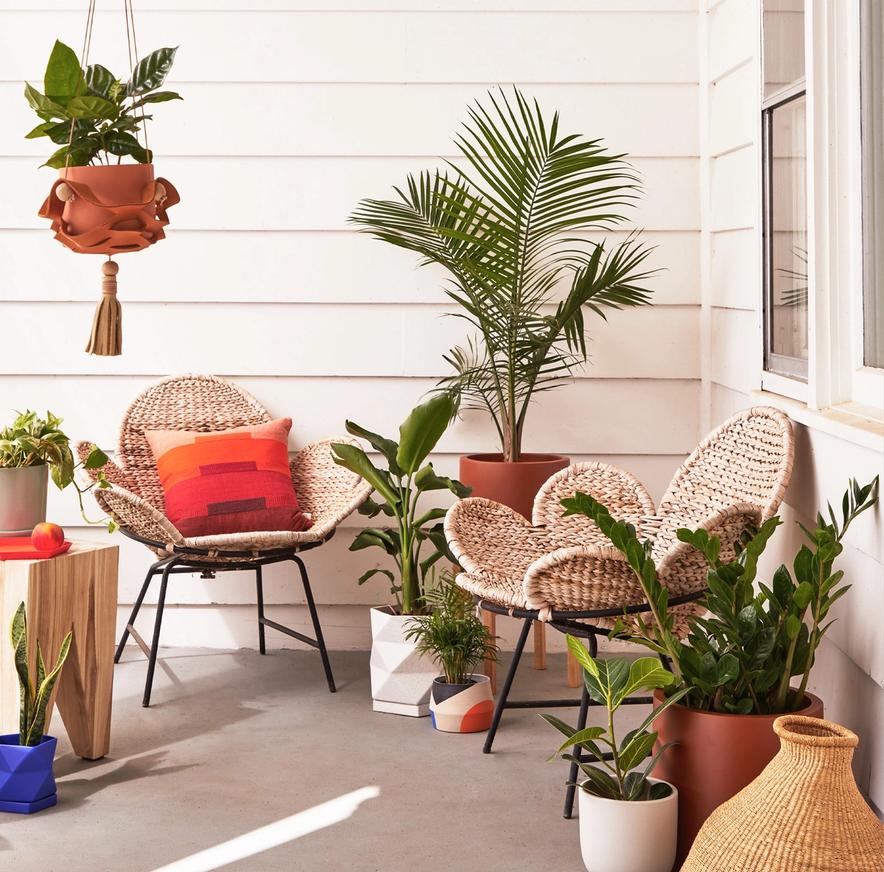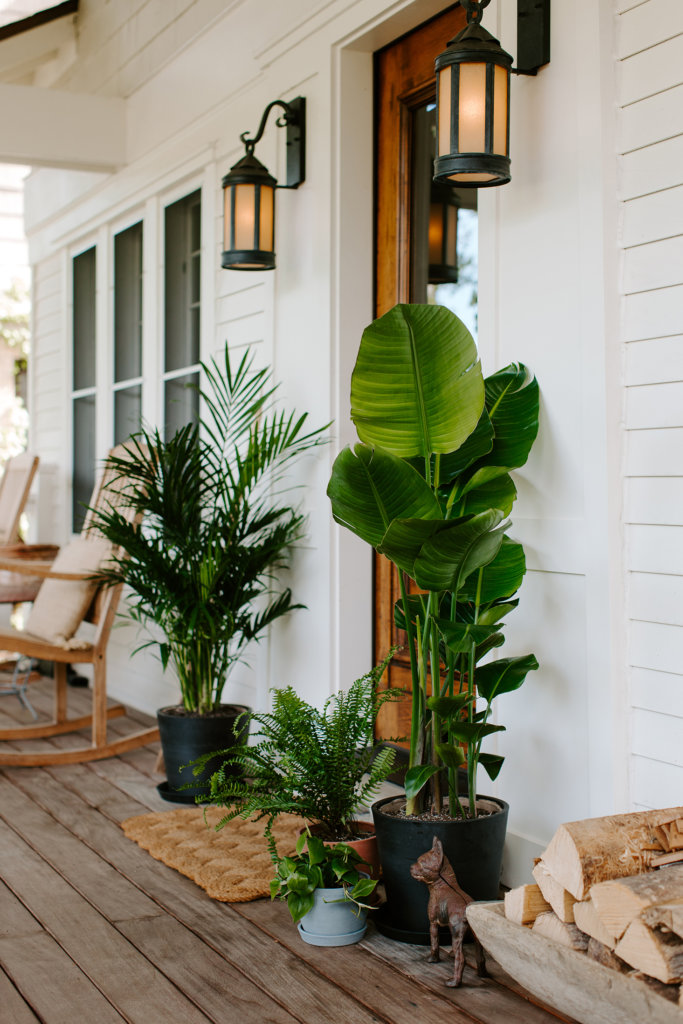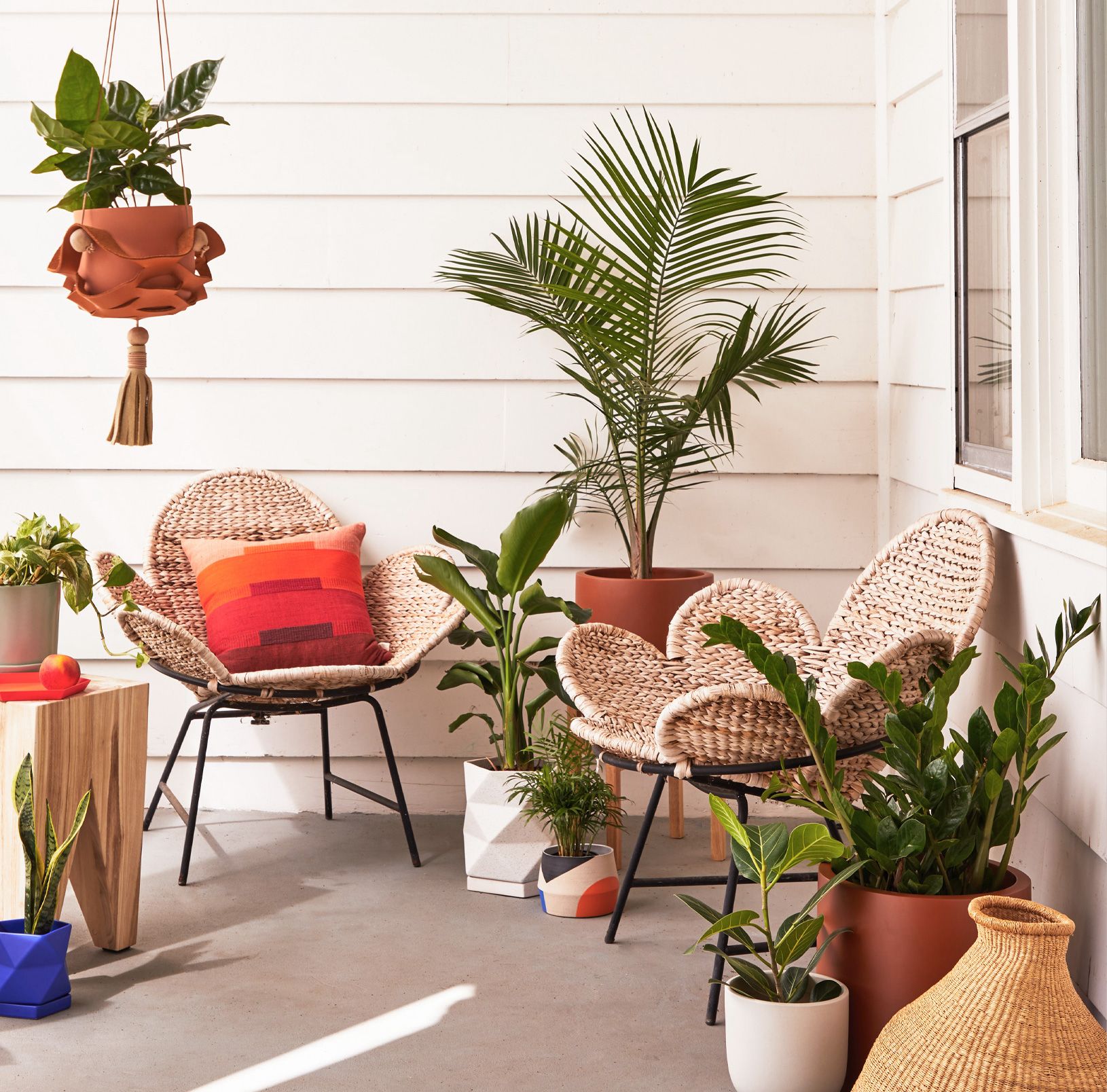Indoor plants may experience shock when moved outside suddenly. This can cause wilting, leaf burn, or pest issues.
Indoor plants add beauty and improve air quality in homes. Moving them outdoors can benefit their growth, but it requires careful planning. Outdoor conditions such as direct sunlight, temperature changes, and pests can harm delicate indoor plants. Gradually acclimatizing them to the outside environment can help.
Start by placing them in a shaded area and slowly increase their exposure to sunlight. Monitor them closely for any signs of stress. By taking these steps, you can ensure that your indoor plants thrive outside and enjoy the benefits of natural light and fresh air.
Introduction To Indoor Plants In The Outdoor Environment
Moving indoor plants outside can offer many benefits. It can also pose challenges. Understanding these factors can help ensure a smooth transition.
Initial Considerations
Before moving indoor plants outside, consider the following:
- Climate: Ensure the outdoor climate suits the plant.
- Light: Gradually introduce plants to outdoor light.
- Temperature: Avoid extreme temperature changes.
- Pests: Be cautious of outdoor pests.
- Watering: Adjust the watering schedule accordingly.
Expected Outcomes
Moving indoor plants outside can lead to various outcomes:
| Positive Outcomes | Negative Outcomes |
|---|---|
| Enhanced growth | Potential for pest infestation |
| Increased flowering | Sunburn on leaves |
| Better air circulation | Water stress |
| Natural rainwater | Temperature shock |
The Science Of Plant Adaptation
Indoor plants can thrive outside with proper care. Understanding how plants adapt to new environments is crucial. Plants have unique needs that change based on their surroundings. Let’s explore the science behind this adaptation.
Understanding Light Needs
Plants need light to grow and produce food. Indoor plants get less light compared to outdoor plants. When moved outside, they receive more sunlight. This can be a shock to their system.
Direct sunlight can burn their leaves. Gradual exposure helps them adjust. Place them in a shaded area first. Slowly move them to brighter spots.
Temperature Tolerance
Temperature plays a key role in plant health. Indoor plants are used to stable temperatures. Outside, they face fluctuating temperatures.
Cold nights and hot days can stress the plants. Some plants tolerate these changes well. Others may struggle and need extra care.
Check the plant’s ideal temperature range. Make sure outdoor conditions match these needs.
| Plant Type | Light Needs | Temperature Tolerance |
|---|---|---|
| Succulents | Bright, indirect light | 50-80°F (10-27°C) |
| Ferns | Low to medium light | 60-75°F (15-24°C) |
| Orchids | Filtered light | 60-80°F (15-27°C) |
- Gradually expose plants to more light.
- Monitor temperature changes closely.
- Know your plant’s specific needs.
- Start with a shaded area.
- Move to partial sunlight.
- Ensure proper watering and care.
Water Requirements And Rain Exposure
Putting indoor plants outside can change their water needs. Natural rain can affect them greatly. This section covers how to manage these changes.
Adjusting Watering Schedules
Outdoor conditions vary from indoor ones. Adjust your watering schedule to match these changes. Indoor plants often need less water inside. Outside, they may need more or less, depending on the weather.
Here’s a simple guide:
- Check soil moisture daily.
- Water when the top inch feels dry.
- Use a moisture meter for accuracy.
Avoid overwatering. Outdoor plants can get waterlogged easily. Watch the weather forecast. Rainy days mean less manual watering.
Effects Of Natural Precipitation
Rain can be both good and bad for indoor plants outside. Natural precipitation provides essential nutrients. It also helps wash away dust. But too much rain can drown roots.
Consider these points:
- Check drainage. Ensure pots have holes.
- Use raised beds to avoid waterlogging.
- Cover plants during heavy rain.
Plants like succulents and cacti need less water. Place them in sheltered spots. More rain can harm these types.
Some plants thrive with more water. Ferns and tropical plants enjoy rain. They benefit from the extra moisture.

Credit: www.thesill.com
Soil And Nutrition Adjustments
When you decide to move your indoor plants outside, the soil and nutrition adjustments become crucial. Outdoor conditions differ vastly from the controlled environment indoors. Proper soil and nutrition adjustments ensure your plants thrive in their new surroundings.
Repotting Essentials
Repotting is a must when transitioning indoor plants to the outdoors. Use a well-draining soil mix suited for outdoor conditions.
- Select a pot with adequate drainage holes.
- Mix garden soil with perlite or sand for better drainage.
- Ensure the pot is large enough to accommodate root growth.
Repotting helps plants acclimate better to outdoor environments.
Fertilization Changes
Outdoor plants have different fertilization needs. Indoor plants often get fertilizers with controlled release. For outdoor use, switch to fertilizers designed for outdoor plants.
- Use a balanced fertilizer with equal parts N-P-K (Nitrogen, Phosphorus, Potassium).
- Apply fertilizer every 4-6 weeks during the growing season.
- Water plants well before and after fertilizing to prevent root burn.
Adjusting fertilizer helps your plants get the nutrients they need outdoors.
Pests And Disease Considerations
Moving indoor plants outside can introduce new challenges. One of the main concerns is pests and diseases. Outdoor environments are home to many bugs and harmful organisms.
Common Outdoor Threats
Outdoor areas have more pests than indoor spaces. Some common threats include:
- Aphids: Small insects that suck plant juices.
- Spider Mites: Tiny creatures that spin webs on leaves.
- Whiteflies: Small white insects that fly when disturbed.
- Fungal Infections: Mold and mildew that thrive in humid conditions.
These pests can cause significant damage to your plants. They can weaken and even kill your plants if not controlled.
Preventative Measures
Taking steps to protect your plants is crucial. Here are some preventative measures:
- Inspect Plants Regularly: Check leaves and stems for signs of pests.
- Use Natural Pesticides: Neem oil and insecticidal soap are effective.
- Encourage Beneficial Insects: Ladybugs and praying mantises eat harmful pests.
- Maintain Plant Health: Healthy plants resist pests better. Ensure they get enough sunlight and water.
These measures can help keep your outdoor plants healthy. Regular care and attention are key.

Credit: bloomscape.com
Acclimatization Process
Moving indoor plants outside can be tricky. The transition process is called acclimatization. This process helps plants adjust to new conditions. It ensures they stay healthy and thrive.
Gradual Introduction Techniques
Introduce your plants to the outdoors slowly. Start by placing them in a shaded area. Do this for a few hours each day. Gradually increase their exposure to sunlight. This helps prevent sunburn and shock.
Use the table below for a week-by-week guide:
| Week | Sunlight Exposure |
|---|---|
| 1 | 1-2 hours |
| 2 | 3-4 hours |
| 3 | 5-6 hours |
| 4 | Full day |
Monitoring Plant Health
Keep a close eye on your plants. Look for signs of stress. These include wilting and yellowing leaves. If you see these signs, move the plant back to the shade.
Water your plants regularly. Outdoor conditions can dry them out quickly. Use a moisture meter to check soil levels. Adjust watering as needed.
Check for pests. Outdoor environments can attract bugs. Use natural remedies to keep pests at bay. Neem oil and soap sprays work well.
- Inspect leaves for holes and spots
- Look under leaves for tiny pests
- Remove affected areas promptly
Following these steps ensures a smooth transition for your plants.
Success Stories: Thriving Examples
Transforming indoor plants to outdoor environments can yield incredible results. Many plants thrive with the added sunlight and fresh air. Here are some success stories that show how well indoor plants can adapt outside.
Case Studies
Several plant owners have shared their success stories. They have seen their indoor plants flourish outside. Here are a few examples:
- Fern Revival: A Boston fern showed new growth within weeks outside.
- Snake Plant Surge: A snake plant doubled in size after being placed outdoors.
- Peace Lily Prosperity: A peace lily produced more blooms and greener leaves.
Key Factors For Success
There are key factors that contribute to the success of moving indoor plants outside. Here are the most important ones:
| Factor | Importance |
|---|---|
| Sunlight | Direct sunlight can burn some plants. Gradual exposure is best. |
| Watering | Outdoor plants may need more water. Monitor soil moisture closely. |
| Temperature | Sudden changes in temperature can shock plants. Move them slowly. |
| Pests | Outdoor environments have more pests. Regular inspection is crucial. |
By paying attention to these factors, indoor plants can thrive outside. Experiment and observe to see the best results for your plants.

Credit: www.thesill.com
Risks And Failures: Learning From Mistakes
Moving your indoor plants outside can be tricky. Many plant lovers have tried it. Some faced unexpected problems. In this section, we will explore the common pitfalls and offer recovery tips. Learning from these mistakes can help you avoid them.
Common Pitfalls
- Sunburn: Indoor plants can get sunburned outside. Their leaves may turn brown or white.
- Temperature Shock: Sudden temperature changes can harm plants. They may wilt or die.
- Pests: Outdoor pests can attack your plants. Bugs and insects love new plants.
- Overwatering: Rain can cause overwatering. Too much water can rot the roots.
- Wind Damage: Strong winds can break branches or uproot plants.
Recovery Tips
If your plants suffer from sunburn, move them to a shaded area. This will help them recover. Trim the damaged leaves to encourage new growth.
To handle temperature shock, bring your plants inside during extreme weather. Gradually expose them to outdoor conditions.
If pests attack, use natural remedies like neem oil. Check plants regularly for pests and remove them by hand.
To prevent overwatering, place plants in well-draining pots. This will prevent root rot. You can also cover them during heavy rains.
Protect plants from wind damage by placing them in sheltered spots. Use stakes to support tall plants.
| Problem | Solution |
|---|---|
| Sunburn | Move to shade, trim damaged leaves |
| Temperature Shock | Gradually expose to conditions, bring inside if needed |
| Pests | Use neem oil, check and remove pests |
| Overwatering | Use well-draining pots, cover during rains |
| Wind Damage | Place in sheltered spots, use stakes |
Conclusion: Making The Decision
Deciding to move your indoor plants outside can be challenging. You need to weigh the benefits against the risks. This section will help you make an informed choice.
Balancing Risks And Benefits
Placing indoor plants outside can offer many benefits. Plants get more sunlight, which helps them grow. Fresh air can also improve their health.
| Benefits | Risks |
|---|---|
| More sunlight | Sunburn |
| Fresh air | Insects |
| Better growth | Weather changes |
Sunlight and fresh air can help plants grow faster. But be careful of sunburn and insects. Weather changes can also harm your plants.
Personal Experiences
Many plant owners have shared their experiences. Some saw their plants thrive outdoors. Others faced challenges like pests and extreme weather.
Here are a few personal stories:
- Jane: “My indoor ferns loved the outdoor shade. They grew so fast!”
- Tom: “My succulents got sunburned. I had to move them back inside.”
- Anna: “I saw more bugs on my plants outside. It was hard to manage.”
These stories show both sides of the decision. Consider your own situation and your plant types. This will help you decide what’s best.
Frequently Asked Questions
Is It Okay To Put Indoor Plants Outside?
Yes, it’s okay to put indoor plants outside. Gradually acclimate them to avoid shock. Choose a shaded spot initially.
Which Houseplants Like To Go Outside In Summer?
Spider plants, jade plants, and Boston ferns thrive outdoors in summer. Aloe vera and peace lilies also enjoy the warm weather.
How To Protect Indoor Plants From Direct Sunlight?
Use sheer curtains to filter sunlight. Place plants in indirect light spots. Rotate plants regularly. Use blinds or shades. Relocate plants during peak sun hours.
Is Fresh Air Good For Indoor Plants?
Yes, fresh air is beneficial for indoor plants. It helps improve air circulation, preventing diseases and promoting growth.
Conclusion
Transitioning indoor plants outside can be beneficial or harmful. It’s essential to consider light, temperature, and humidity changes. Gradual acclimation helps plants adjust smoothly. Proper care ensures they thrive in their new environment. Happy gardening!

My mission is to help you bring the beauty of nature indoors with expert advice, detailed plant care guides, and creative design ideas.




